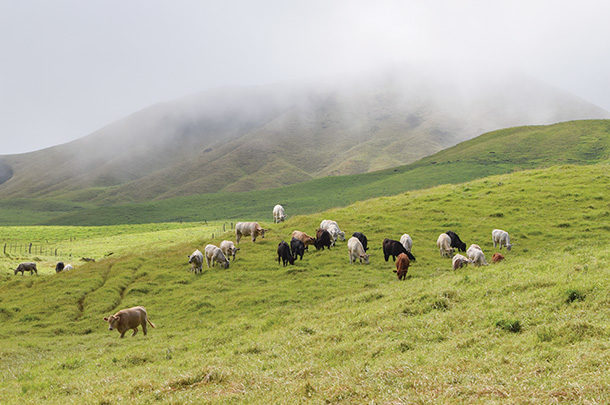Twenty years ago, a colleague and I began an extension publication with this sentence: “Without question, stocking rate is the most important grazing management decision a rancher makes.” Today, that statement should be broadened to read, “No other management decision affects profitability of a range livestock enterprise more than stocking rate.”
Stocking rate and carrying capacity are sometimes used interchangeably and inaccurately, so it is imperative to distinguish the two here. Stocking rate is the area (acres or hectares) allocated per grazing animal, typically quantified in animal units (AU); it is directly determined by ranch management. Carrying capacity is the optimum long-term stocking rate that sustains the health and vigor of the natural resources (soil and forages); it is not directly determined by the ranch management. Stock density is the area allocated per animal for a specific time period (eg., AU or total animal weight per unit area). Much like stocking rate, it is directly determined by ranch management.
Annual stocking rate fluctuates with precipitation. Consider 36 years of annual rainfall data from a ranch presented in Table 1.

While the average annual rainfall is 27 inches, note the variation from 11 to 42 inches. Half of the years were above average and half received below-average rainfall. Admittedly, annual rainfall records are of little value unless number of rainfall events, precipitation per event and rainfall relative to the primary forage growing season are considered as well.
The late March 2022 U.S. Drought Monitor indicates that the southeastern states, all states west of the Mississippi River and Hawaii are experiencing some level of drought. A popular drought mitigation strategy among conservation-minded resource stewards is to stock at less than maximum carrying capacity. Referring again to the rainfall data, 83% of the years during this three-and-a-half-decade period received at least 75% of average annual rainfall. Consequently, stocking at 75% of carrying capacity has proved to be an effective drought mitigation management decision for numerous grazing managers.
Stocking rate decisions impact all three pillars of sustainability. Environmental concerns including soil health and erosion potential, water infiltration and holding capacity, and plant community diversity and vigor are influenced by stocking rate. Societal expectations include these resource stewardship concerns and animal (both domestic and wild) health and wellbeing. The focus of this article is the relationship between stocking rate and economic sustainability and profitability.
Previous Progressive Cattle articles in February and March of 2021 (Bragging rights require knowing costs and Unit cost of production expressions) have discussed the importance of managing costs and knowing unit cost of production. Production costs are typically sorted two ways: fixed (indirect) and variable (direct). Summary of a multiranch cow-calf enterprise database indicates a two-third-to-one-third relationship between fixed and variable cost, respectively.
Natural resource stewards unanimously employ sustainable stocking rates and strive to improve the health and productivity of the resources. As plant diversity and forage availability increase, the need (and cost) for fed feed (protein/energy supplements and hay) declines, thereby reducing a top three contributor to annual variable cost per cow.
Ranch managers have nominal control over the cost of inputs and services; managing cost of production involves more than the magnitude of expenses. The number of production units (cows) across which fixed costs are allocated is a management decision with appreciable impact on production cost. Labor and land cost (payment or lease, property taxes, etc.) are large contributors to fixed cost for cow-calf operations. Relative to land cost, stocking rate and unit cost of production are inversely related. Likewise, cost allocation per full-time employee (FTE) decreases as number of production units managed rises. Efficient, well-managed ranches often task a FTE with care of 800 to 1,000 cows.
Finally, do not overlook the concept of contribution margin (contribution margin = revenue – variable cost). Assume annual fixed cost per cow is $600 and “X” number of cows generate revenue sufficient to cover all annual fixed costs. Assuming a stocking rate increase of one cow is sustainable (by natural resources and labor), the additional “X+1” cow will generate an additional $600 profit above that generated by the “X” number of cows that are covering all annual fixed costs.
Surely other factors such as reproduction, percent calf crop weaned, pounds weaned per cow exposed, pounds weaned per FTE and production per acre influence cow-calf enterprise profitability. However, all of those metrics are a result of direct management decisions. Among the many decisions made by ranch management that affect profitability, stocking rate is atop the list.









